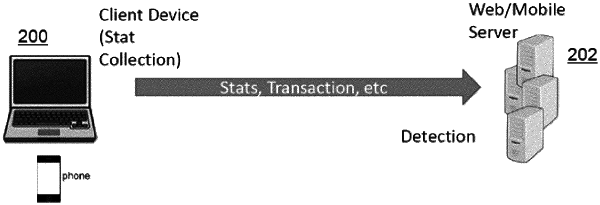| CPC H04L 63/1466 (2013.01) [H04L 63/0876 (2013.01); H04L 63/1425 (2013.01)] | 9 Claims |

|
1. An apparatus, comprising:
one or more hardware processors;
computer memory holding computer program code executed by the one or more hardware processors, wherein the computer program code is configured to:
responsive to receipt of a request associated with an automated interaction initiated by a requesting client and directed to a server, return to the requesting client information that manipulates the client to perform client-side computations;
responsive to receipt of data collected by the requesting client as a result of performing the client-side computations, t-e-analyze the data to determine whether the data represents an expected behavior of the requesting client, the data being analyzed by applying one of: machine learning, a probabilistic computation, and a statistical computation; and
based on a determination that the data does not represent an expected behavior of the requesting client, take a blocking or mitigation action with respect to the request.
|